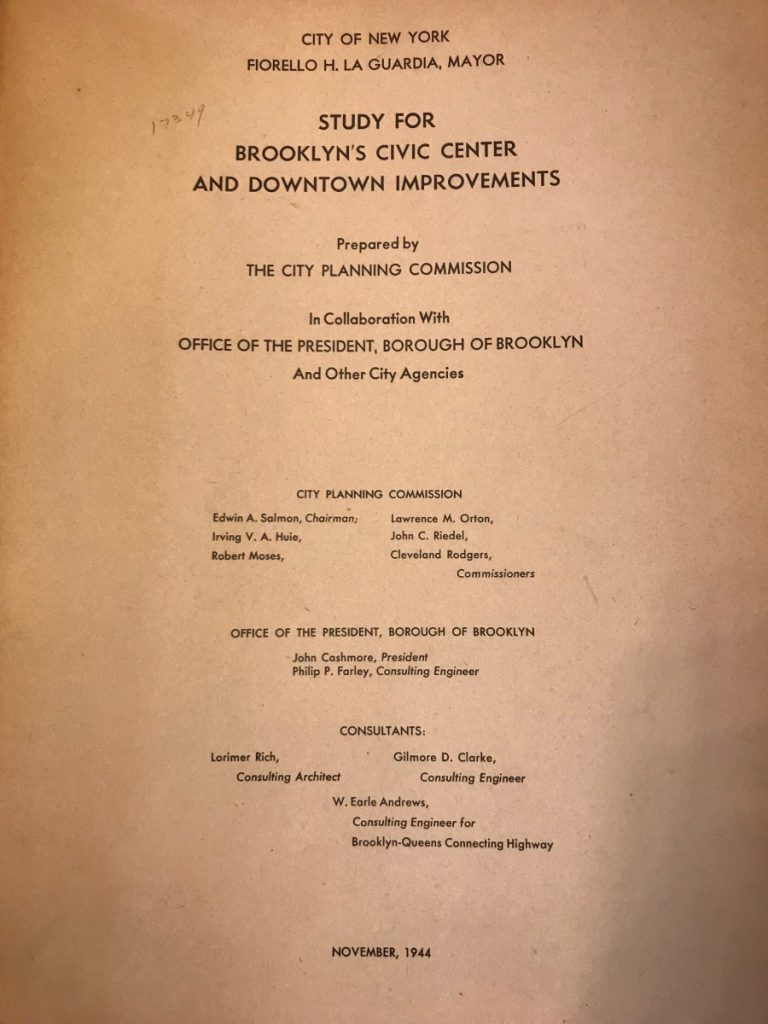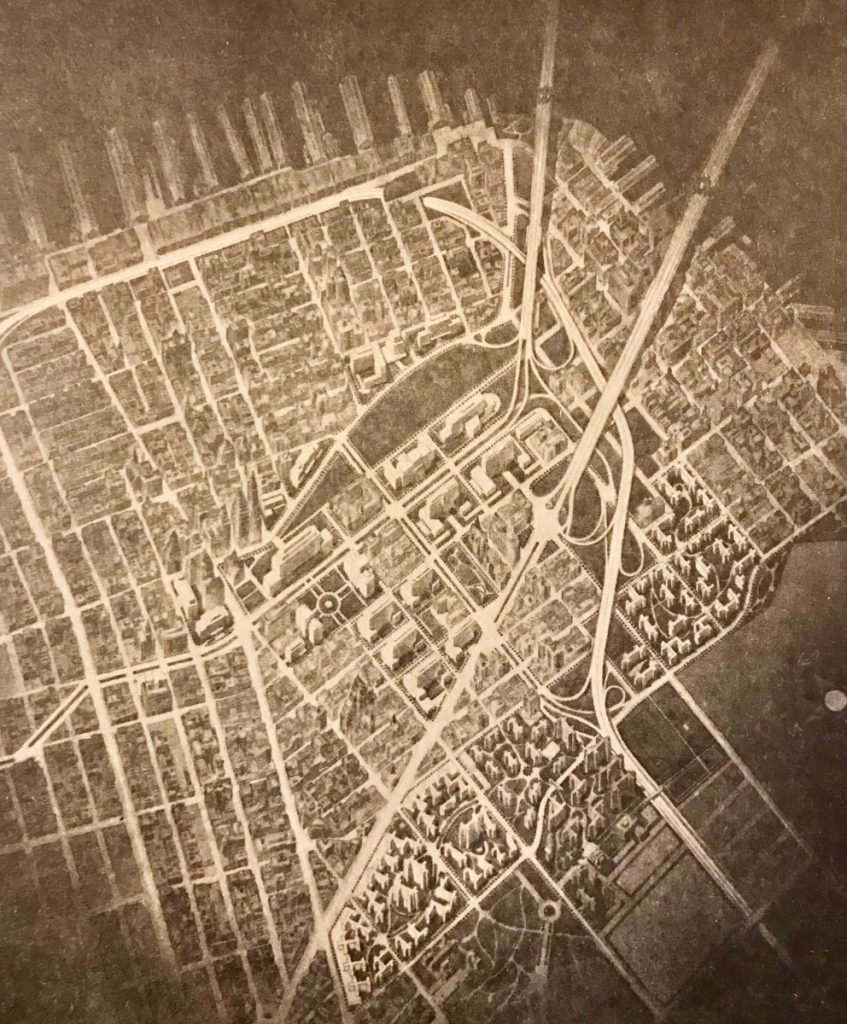The 1944 Study for Brooklyn’s Civic Center is an important reference for the evaluation of the current conditions of Downtown Brooklyn. Downtown Brooklyn is currently plagued by heavy traffic, dangerous intersections, overly concentrated traffic flow, numerous zones of unoccupied open space, and public buildings that are more intimidating and overbearing than gracious and dignified.
The Civic Center concept is rooted in simple logic: first, group the public agencies so that staff or Brooklyn citizens can conveniently move between them quickly and efficiently; second, use the collection of public buildings to create a place in the city of higher importance and dignity. The mall in Washington DC certainly comes to mind as a composition that achieves these ends: one can enjoy a day at a variety of galleries and museums that endow the open space with a great dignity, setting up the critical crescendos of the composition: the Capital, the Lincoln Memorial, the Washington Monument.
Brooklyn was not so fortunate, and the failure of the Brooklyn Civic Center to define a place of dignity or even a place of basic design coherence needs to be studied and understood so that this critical neighborhood of Brooklyn can be re-established as a functional but also vital/active center worthy of the great borough and its proud population.





Leave a Reply